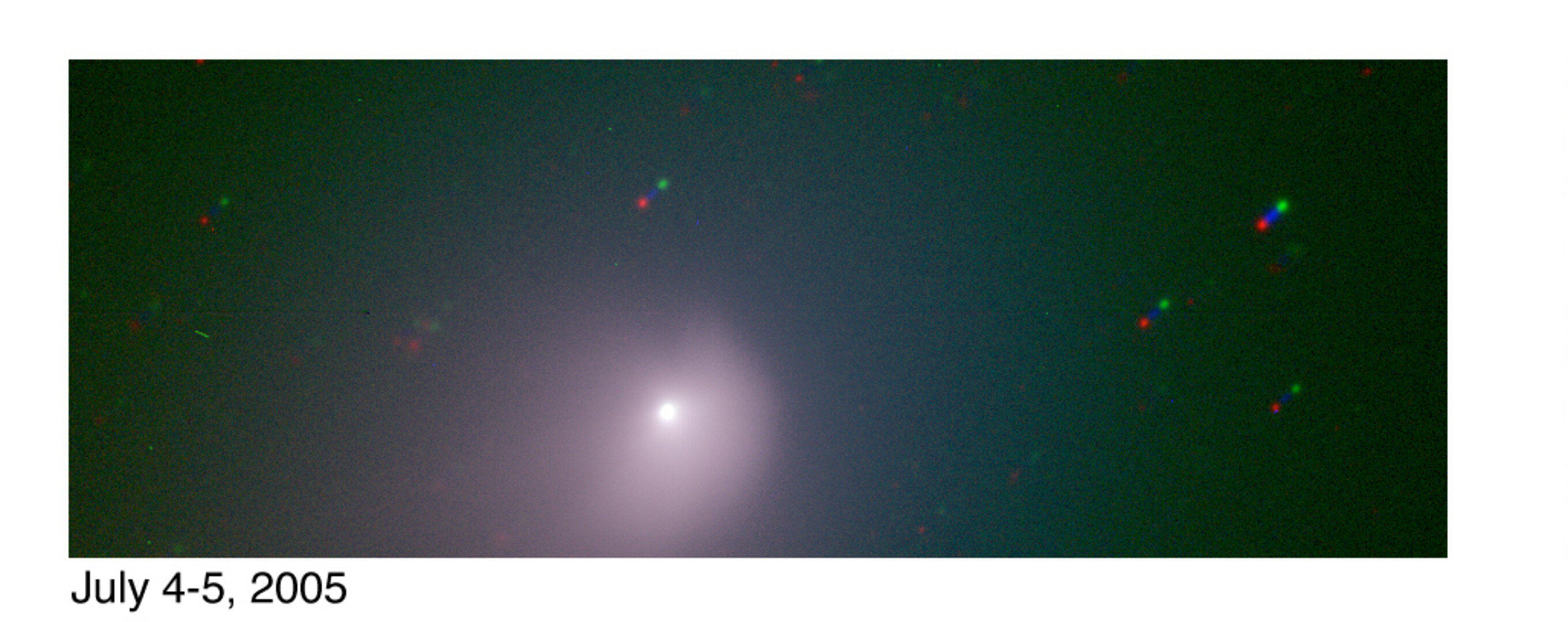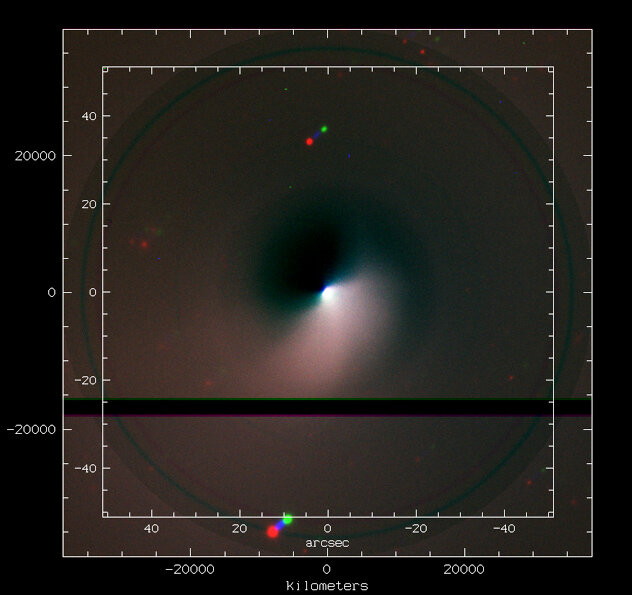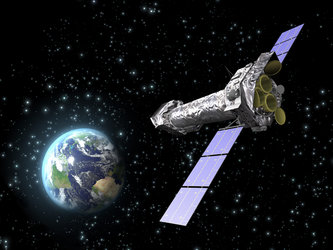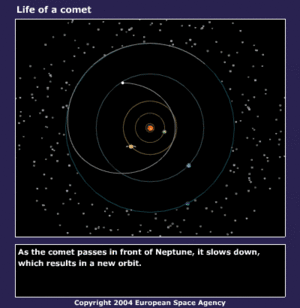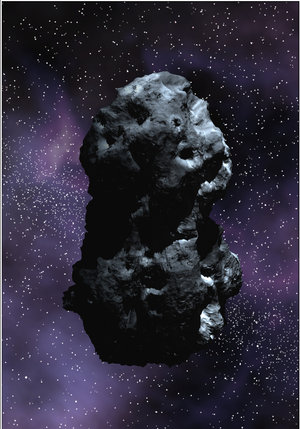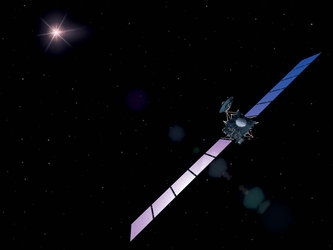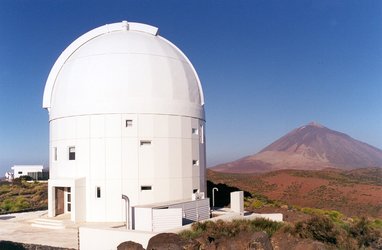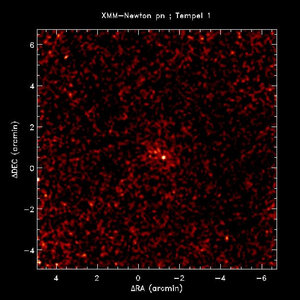ESO Very Large Telescopes study comet after impact
Through the night of 4 July 2005, all European Southern Observatory (ESO) telescopes observed the effects of the impact on Comet 9P/Tempel 1. At sunset in Chile, the seven telescopes of the La Silla Paranal Observatory went into action.

The FORS2 multi-mode instrument on Antu, one of the 8.2-metre Unit Telescopes of the Very Large Telescope (VLT) array, took stunning images, showing that the morphology of the comet had dramatically changed: a new bright fan-like structure was now visible.
The impact occurred at 07:52 CEST on 4 July. At that time, the comet had already set below the horizon in Chile, so ESO VLTs could only start observations several hours later, at 21:20 CEST. A pre-impact image is shown here for comparison.

The first ESO observations were actually done in the infrared by the TMMI2 instrument on the 3.6-metre telescope at La Silla, at 21:20 CEST (still daylight in Chile).
These observations showed the comet to be two to three times brighter in the infrared than the day before the impact. The coma is also much more extended than it was before the impact.
The fan lies in the southern part of the image and is rather bright and well defined. This feature is an addition to those that were already visible during the previous days that seems to still be underlying the new one. Behind this fan, the old coma from yesterday is still present.
The new structure is about 15 000 kilometres in length, indicating that the matter has been ejected with a speed of about 700 to 1000 kilometres per hour.
Further observations during the week will study the evolution of this fan, revealing if the probe has activated a new region of the surface and how long that region remains active.
The fan is visible through the reflection of sunlight on dust grains. The fact that the big plume is not uniform in colour probably indicates that dust particles of different sizes are travelling at different speeds.

Later at La Silla, the SOFI instrument on the NTT telescope imaged the comet in the near-infrared.
An image in the J-band also shows the dust shell from the impact in the south-western quadrant of the coma.
The very inner coma (indicated by the white box) shows ongoing enhanced activity compared to the pre-impact level.
The astronomers at the La Silla Paranal Observatory will continue to observe Comet 9P/Tempel 1 for another four days in order to monitor precisely its longer-term behaviour.
For more information:
Claus Madsen, ESO Public Affairs Department
Gerhard Schwehm, ESO VLT impact observations co-investigator
ESA-ESTEC (The Netherlands)
E-mail: gerhard.schwehm @ esa.int
Rita Schulz, ESO VLT impact observations co-investigator
ESA-ESTEC (The Netherlands)
Email: rita.schulz @ esa.int
The ESO article is available at:
http://deepimpact.eso.org/obseso8.html


